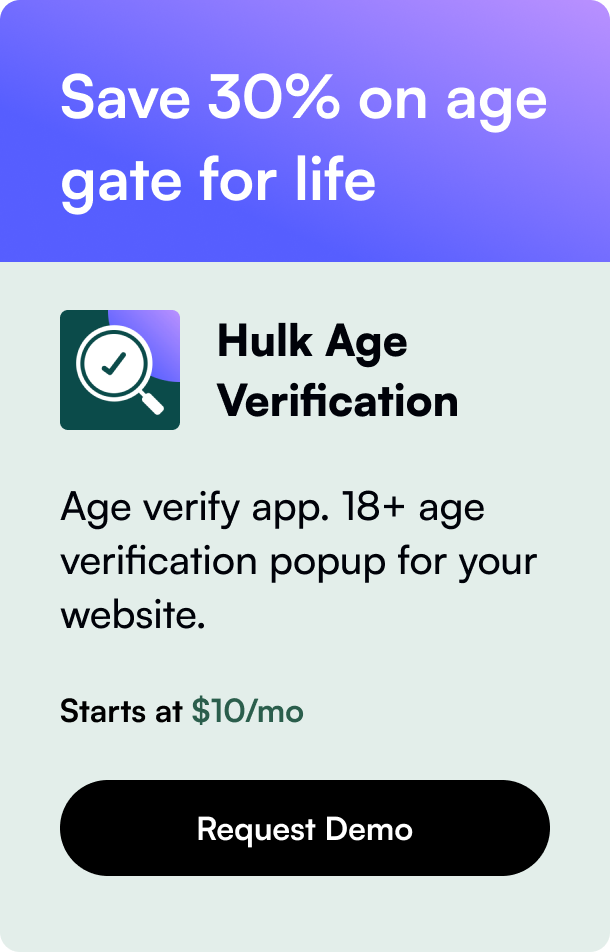Table of Contents
- Introduction
- Understanding Pop-Ups on Shopify
- Step-by-Step Guide to Editing Pop-Ups on Shopify
- Best Practices for Pop-Up Usage
- Conclusion
- FAQ Section
Pop-ups can be an eCommerce goldmine or a user experience pitfall, depending on how they are executed. In the bustling online market, Shopify store owners continually seek ways to attract and retain customers, and pop-ups have emerged as a potent tool for engagement and conversion. Whether you're aiming to grow your email list, announce a sale, or simply nudge visitors towards making their first purchase, understanding how to edit and optimize pop-ups on Shopify is crucial. This comprehensive guide delves into the intricate world of Shopify pop-ups, offering you the know-how to create compelling, effective pop-ups that resonate with your audience.
Introduction
Did you know that well-crafted pop-ups can significantly enhance your website's conversion rate? While pop-ups often get a bad rap for being intrusive, when implemented thoughtfully, they can be a game-changer for your eCommerce store. The digital landscape is ever-evolving, and with Shopify being a leading platform for online businesses, mastering its tools, including pop-ups, is a necessity. This post intends to equip you with detailed insights and practical steps to edit pop-ups on your Shopify store, ensuring they contribute positively to your business goals.
From integrating pop-ups that seamlessly align with your brand's identity to ensuring they are displayed at just the right moment, this guide will cover all bases. Whether you're a seasoned Shopify user or new to the platform, you'll find valuable tips, strategies, and step-by-step instructions to refine your pop-up strategy. Let's embark on this journey to unlock the full potential of pop-ups, turning them into a powerful asset for your Shopify store.
Understanding Pop-Ups on Shopify
Before we dive into the specifics of editing pop-ups, it's essential to grasp the various types of pop-ups available on Shopify and their potential applications. Shopify offers a range of pop-up options, including email subscription prompts, announcement bars, and promotional alerts. These can be designed as overlay pop-ups, slide-ins, or even as a subtle notification bubble.
Key Considerations for Pop-Up Design
- Relevance: Ensure your pop-up content is directly relevant to your audience's interests and your store's current context (e.g., ongoing promotions).
- Timing: The timing of your pop-up plays a crucial role. Too soon, and you might deter a new visitor; too late, and you might miss an opportunity.
- Visual Appeal: Your pop-up should be visually compelling and align with your brand's aesthetic. Consistency in design builds trust and recognition.
- Message Clarity: Be clear and concise with your pop-up message. Whether it’s a call-to-action (CTA) for newsletter signup or a special discount offer, your intent should be immediately understandable.
Step-by-Step Guide to Editing Pop-Ups on Shopify
Accessing Pop-Up Settings
-
Navigating Through Shopify Admin: Start by logging into your Shopify admin panel. Navigate to ‘Sales channels’ > ‘Online store’ > ‘Themes’.
-
Theme Customization: Find the theme you are currently using and click on ‘Customize’. This will open the theme editor, where most pop-up settings can be edited.
Editing Existing Pop-Ups
-
Locating Pop-Up Settings: In the theme editor sidebar, look for ‘Theme settings’ or a section specifically named ‘Popup’. This might vary depending on your theme.
-
Customizing Content and Design: Here, you can edit the pop-up’s message, decide on its appearance, and set conditions for its display. For example, you can change the text, background color, and timing.
-
Advanced Customizations: For more in-depth customizations, such as changing the pop-up’s layout or adding custom fields, you might need to delve into the theme’s code. This typically involves editing the Liquid, HTML, or CSS files.
Creating New Pop-Ups
If you're looking to add a new type of pop-up not supported by your theme’s default settings, you may need to use a third-party app from the Shopify App Store. Apps like Privy, Justuno, or Wisepops offer advanced customization options and targeting capabilities.
Best Practices for Pop-Up Usage
- Targeting and Personalization: Use targeting to display specific pop-ups to different segments of your audience. Personalization can significantly increase a pop-up's effectiveness.
- A/B Testing: Experiment with different pop-up designs, messages, and timings to see what works best for your audience.
- Mobile Responsiveness: Ensure your pop-ups look great and work smoothly across all devices, especially on mobile.
- Compliance: Make sure your pop-ups comply with legal requirements, such as GDPR for EU visitors.
Conclusion
Pop-ups, when used wisely, can be a powerful tool in your Shopify arsenal. By following the steps outlined in this guide, you can effortlessly edit and optimize pop-ups to enhance user engagement, increase conversions, and ultimately, boost your online store’s success. Remember, the key to effective pop-ups lies in striking the right balance between engagement and intrusiveness. Keep testing and tweaking until you find that sweet spot, and your Shopify store will be all the better for it.
FAQ Section
Q: How often should I change my pop-up content? A: Regularly update your pop-up content to keep it fresh and relevant, especially in response to new promotions, seasons, or trending products.
Q: Can I use pop-ups for purposes other than email collection? A: Absolutely! Pop-ups can be used for various purposes, including announcements, user feedback, age verification, and guiding visitors towards current promotions.
Q: Are there any downsides to using pop-ups? A: If not used carefully, pop-ups can potentially annoy visitors, leading to high bounce rates. It's crucial to prioritize user experience when designing your pop-up strategy.
Q: How can I ensure my pop-ups don’t slow down my site? A: Optimize images and use efficient coding practices. Consider using a pop-up app optimized for performance, and regularly monitor your site’s load time.
By applying the insights and techniques from this guide, you can master the art of pop-up customization on Shopify, creating a more engaging and profitable online store.








